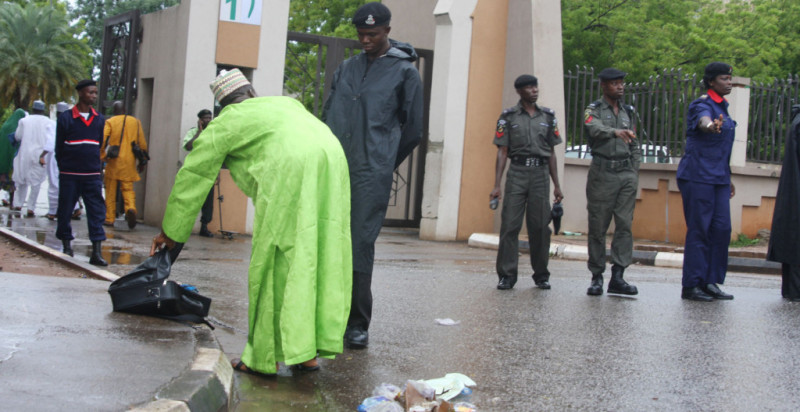




In recent news, there have been alarming incidents that highlight the importance of security protocols and the need for trained personnel to handle potentially dangerous situations in hospitals [ee6a48e1]. One such incident occurred at CHRISTUS St. Michael's Hospital in Texarkana, Texas, where a man named Willy Kidd began acting erratically and causing a disturbance [ee6a48e1]. Another incident took place at the New Hampshire Hospital in Concord, where a shooting occurred, resulting in multiple victims being injured [a7efc030]. These incidents serve as a reminder of the importance of maintaining a safe and secure environment in healthcare facilities [ee6a48e1] [a7efc030].
Hospitals are places of healing and care, and it is crucial to ensure the safety of both staff and patients. Security protocols should be in place to handle any potential threats or disturbances. Trained personnel who can effectively respond to such situations play a vital role in maintaining a secure environment [ee6a48e1]. Regular reviews of security procedures should be conducted to identify any gaps and make necessary improvements [ee6a48e1].
Similarly, churches also need to prioritize security to protect their followers, assets, and properties from intruders. Security tips for churches include obtaining the phone numbers of local security outfits, documenting personal information of vehicles and first-time visitors, organizing security seminars, installing CCTV cameras, and discreetly contacting local security operatives in case of emergencies [2cdfacf8]. By implementing these measures, churches can enhance their security and ensure the safety of their premises [2cdfacf8].
Both healthcare facilities and churches should collaborate with law enforcement agencies to enhance security measures. This collaboration can provide additional support and expertise in handling potential threats or emergencies [a7efc030] [2cdfacf8].
In a new development, the Department of Homeland Security has released a 16-page guide titled 'Security Performance Goals for Faith-Based Communities' to help houses of worship protect themselves from targeted violence [ffc5e790]. The guide provides practical information on measures such as trimming landscaping to prevent hiding places for attackers and limiting the sharing of unnecessary information during livestreams of services. It also emphasizes the importance of having a plan in place for emergencies and offers information on federal government grants for security improvements [ffc5e790]. The guide was developed in response to concerns expressed by various faiths about protecting their communities. Homeland Security Secretary Alejandro Mayorkas stated that the department is committed to protecting every American's right to worship freely and safely [ffc5e790]. The guidance will be distributed through the Cybersecurity and Infrastructure Security Agency (CISA) offices and its network of protective security advisers across the country [ffc5e790].
Additionally, church leaders can enhance their ministries through the use of technology. A practical tech playbook for church leaders provides guidance on incorporating technology into their ministries [9555ae90]. The playbook emphasizes starting small and familiar, experimenting with accessibility and engagement, embracing community building through tech, trading anxiety for security, and collaborating with tech-savvy individuals. It suggests various tools and strategies, such as using social media, live videos, automated translations, online events, messaging platforms, and video calls. The playbook also highlights the importance of data security and offers resources for further learning [9555ae90].
The common theme in these inputs is the importance of security protocols, trained personnel, collaboration with law enforcement agencies, and the new guide by the Department of Homeland Security in ensuring the safety and security of healthcare facilities and churches. By prioritizing security, taking proactive measures, and utilizing the guidance provided by Homeland Security, both healthcare facilities and churches can create a safe environment for everyone [ee6a48e1] [a7efc030] [2cdfacf8] [ffc5e790]. Church leaders can also enhance their ministries and engage their communities through the use of technology [9555ae90].